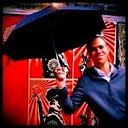Building on my previous post, here’s another exercise from Story-Based Strategy on how stories have informed how I see and construct reality.
Think of a story that you found moving and retell it. Why is it powerful for you? How does it use the elements of story? What are some of the underlying assumptions that resonate with you?
It’s a film about a white working class single mum who works in a recruitment agency which primarily recruits out in Eastern Europe for cheap workers and matches them to companies over in the UK.
Already, this shows the cannibalistic effect of the power structures of our globalised economy which drives a “race to the bottom” of powerless people to undercut other people without power.
But she is getting undercut herself by her bosses. So she and a friend set up a recruitment agency to avoid getting undercut by an employer. Given the contacts they have in Eastern Europe, they can easily go out there and recruit to their new agency. This goes well and she even starts falling in love with one of the workers.
The more people do this, the more others follow suit.
Although many of the people work in very low paid long hour jobs, they all have the same rights as other UK citizens now being part of the EU — from a minimum wage to sick leave. And when their unscrupulous employers try and undercut them, they can and do stand up for themselves and defend those rights to the agency who recruited them.
It also shows the potential of a “race to the top” where minimum European standards, basic solidarity enshrined in law, mean that people can defend themselves and inspire others to do the same, and organise each other.
However, she gets fed up with all these negotiations and she finds it difficult to make a profit with them. So she is tempted to recruit undocumented migrants who are already living in the UK but don’t benefit from the same fights as they have no legal status.
This shows that people with no legal status are treated as less than humans. It also shows how quickly people will be tempted to go “underground” when they have no money.
But then the mafia see her as competition and try and eliminate her. She then grasses up the undocumented migrants when they start making a fuss. But when she discovers the family and how they live she tries to change her mind.
What did I learn from this? We feel what we see
This shows how differently people can act after they have witnessed how people really live and have experienced the emotions they have shared with those people.
Beyond the story itself, I saw the film at a mini festival I helped out called “Love Difference“. It was one of the first times I had got involved collaborating with European Alternatives who had organised this, and it also showed to me the power of creativity in exploring really complex issues (in this case integration of young migrants in local communities) and in reaching out to where different audiences are, in this case…the film was shown in a nightclub Cargo, quickly followed by bands and DJs from Eastern Europe.
